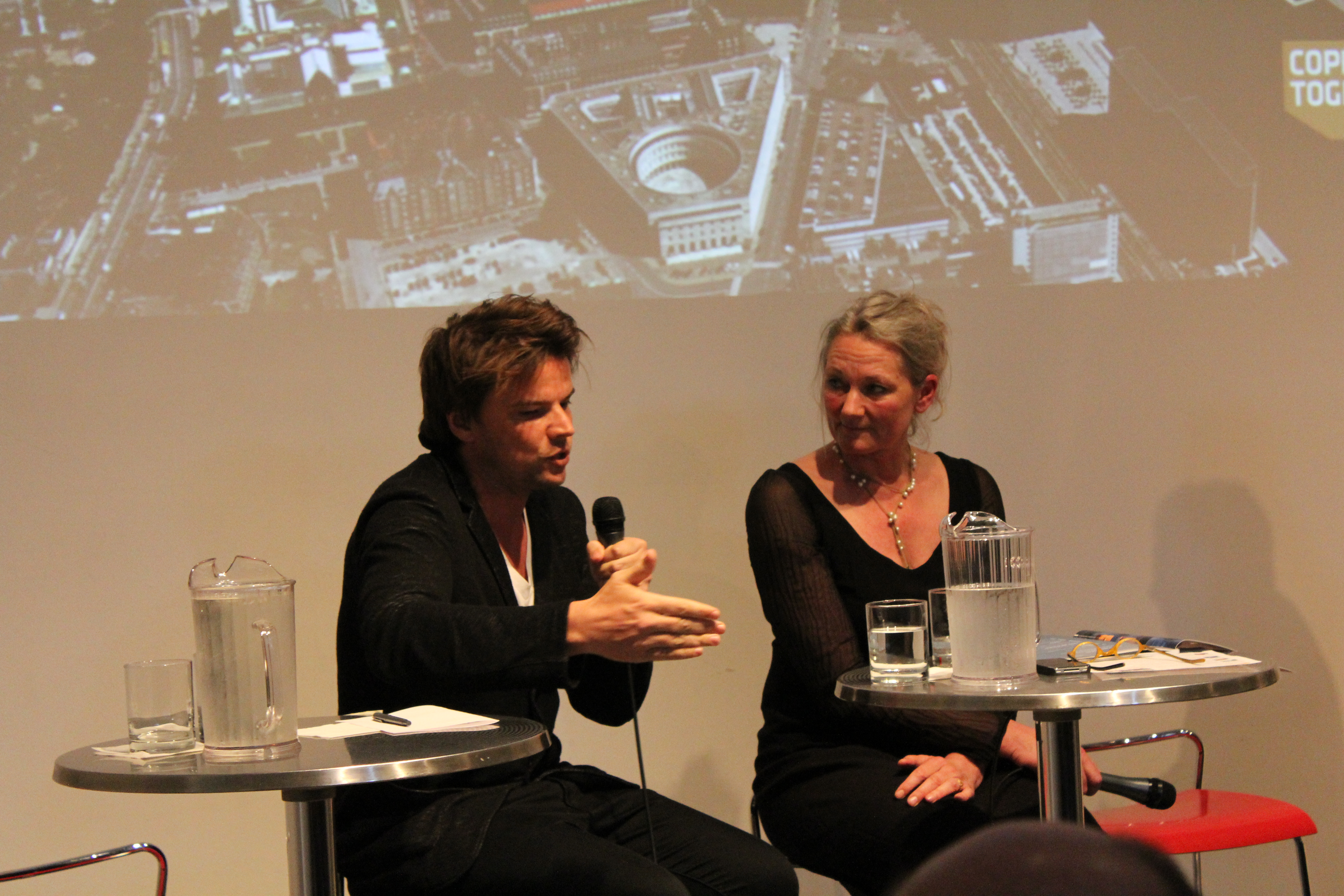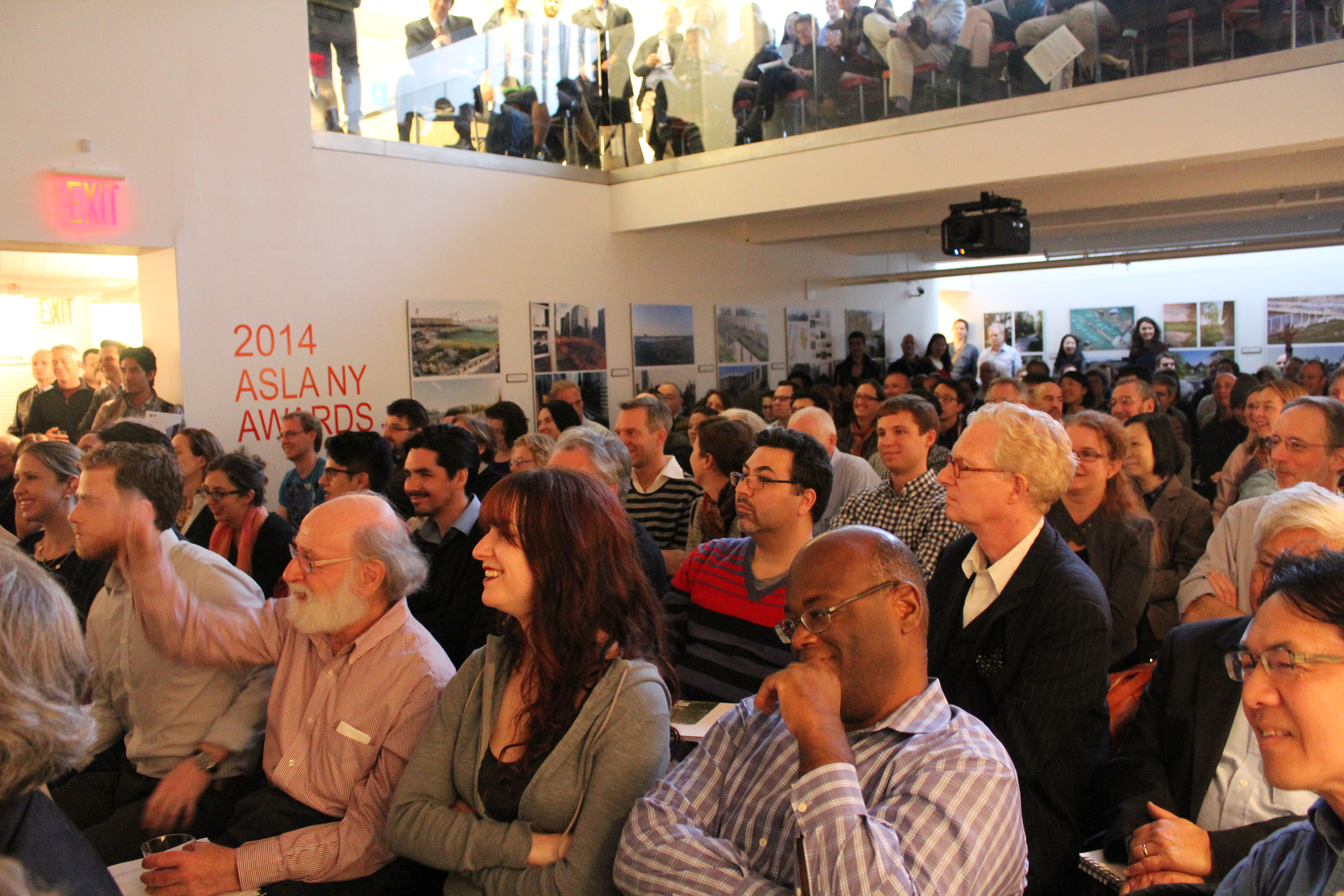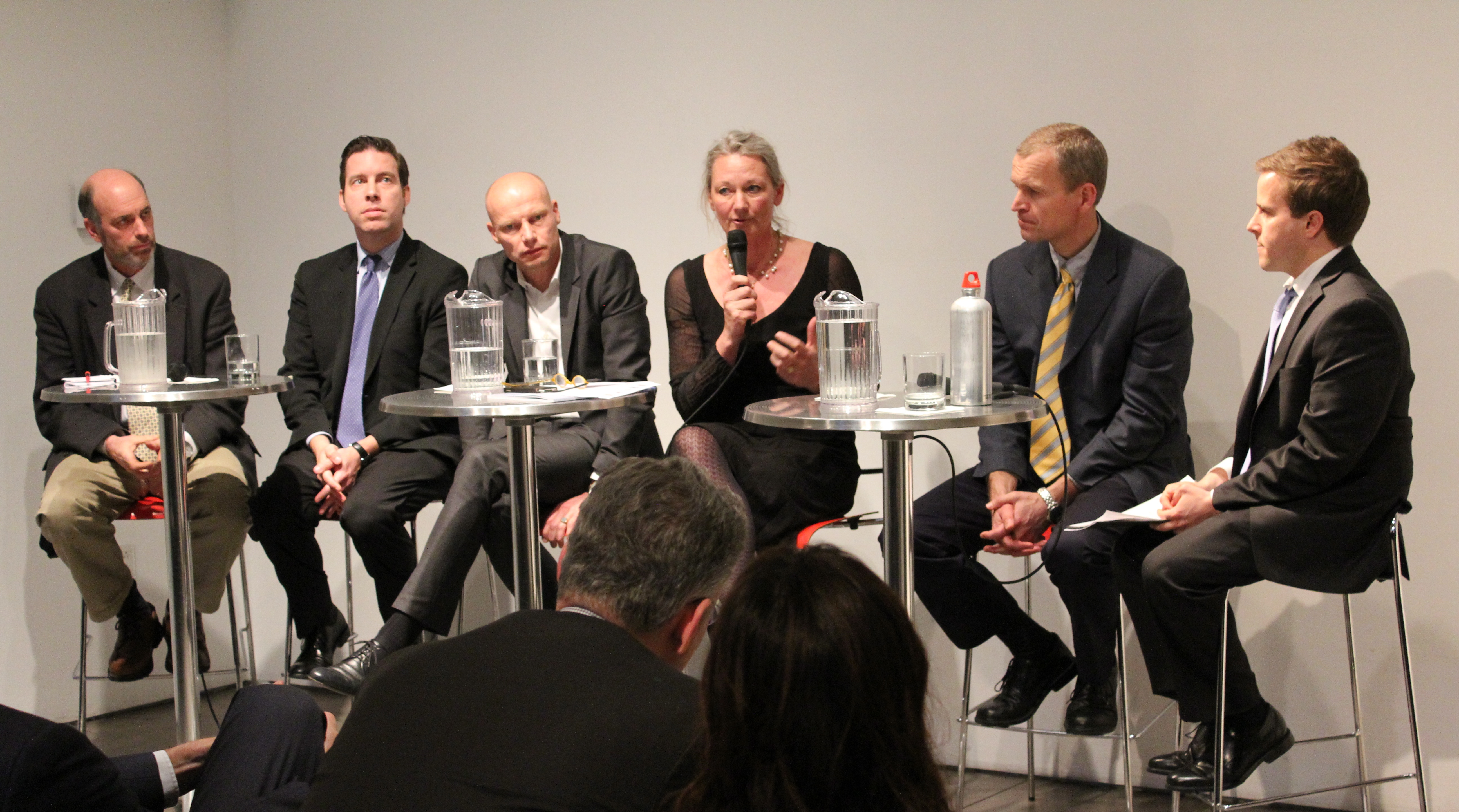by ZoeSeibel
The line of people that stretched down LaGuardia Place to attend “Cities by Water: Solutions from Copenhagen and New York” on 04.08.14 was a testament to the fact that in the wake of Hurricane Sandy, New Yorkers have become acutely aware of the threat that climate change poses to their city. The program, related to the “Copenhagen Solutions” exhibition currently on view at the Center for Architecture, compared and contrasted approaches to the water-related challenges facing New York and Copenhagen.
Bjarke Ingels, founder of the Copenhagen- and New York-based architectural firm Bjarke Ingels Group (BIG), and Tina Saaby, City Architect of Copenhagen, fielded the first questions posed by AIANY Executive Director Rick Bell, FAIA, who guided the evening’s discussion. Bell asked Ingels and Saaby to comment on the extent to which political leadership, policy, and the relationship between the public and private sectors determines what is possible in Copenhagen. Saaby explained that in Copenhagen there is both a top-down and bottom-up approach implemented simultaneously, resulting in long-term visions for city planning coupled with short-term actions.
Building on Saaby’s remarks, Ingels highlighted several facets of Denmark’s socially-oriented government policy – including the distribution of wealth and free health care – which allows Copenhagen to be more receptive to holistic solutions and public-private collaboration. Ingels noted that the massive redistribution of wealth in Copenhagen creates a less stratified urban environment, one that is more conducive to buildings that maximize social engagement. In contrast, he posited that social challenges tend to inhibit the creation of socially interactive spaces in New York, noting the difficulty of even putting a bench outside of an apartment building. Saaby re-enforced this argument, saying that if there was one lesson New Yorkers might take away from the 12 projects exhibited in “Copenhagen Solutions,” it is that in each solution there is a focus on human beings and how to connect them.
The panel discussion that followed featured a group of climate and water experts working in both the public and private sectors. The conversation often circled back to the same conclusion: in addition to tangible solutions based on new technologies and building innovations, there is also a socio-cultural need for New Yorkers to re-evaluate what it means to live in a “city by water.”
Alan Cohn, director for Climate and Water Quality at the NYC Department of Environmental Protection; Jesper Kjelds, vice president of the Danish Hydraulic Institute; and Doug Friend, New York regional director and chief project manager of COWI Ocean and Coastal Consultants, enforced the importance of learning to live with water instead of resisting it. According to Friend, before Sandy, there was little attention paid to waterfront access in certain neighborhoods. Unfortunately, it took the loss of lives and homes on a regional scale to fully grasp that the waterfront is not simply Manhattan-centric, and that a regional, communal approach is necessary.
Roland Lewis, president and CEO of the Metropolitan Waterfront Alliance (MWA), spoke about the MWA’s effort to develop design guidelines for new and retrofitted waterfront development in the New York/New Jersey metropolitan region. Waterfront Edge Design Guidelines (WEDGE) will operate in a similar fashion to Leadership in Energy and Environmental Design (LEED), creating a set of design concepts and best practices that can be implemented on a regional scale.
Henk Ovink, principal of Rebuild by Design and senior advisor to Secretary Shaun Donovan, Hon. AIANY, of the Department of Housing and Urban Development (HUD), stressed that solutions devised by the most adept coalition of scientists, engineers, and technological experts are not enough. “We must also change the hearts and minds of every person to re-think what it means to live in this city,” Ovink said.
Zoë Seibel is the Office Manager at AIANY | Center for Architecture. She holds a degree in Urban Design and Architecture Studies from NYU.
Event: Cities by Water: Solutions from Copenhagen and New York
Location: Center for Architecture, 04.08.14
Speakers: Rick Bell, FAIA, Executive Director, AIA New York | Center for Architecture (moderator); Bjarke Ingels, Founder, BIG; Tina Saaby, City Architect of Copenhagen; Henk Ovink, Senior Advisor to U.S. Secretary of Housing and Urban Development Shaun Donovan, Hon. AIANY, and Principal, Rebuild by Design; Alan Cohn, Director for Climate and Water Quality, NYC Department of Environmental Protection (DEP); Jesper Kjelds, Vice President, Danish Hydraulic Institute (DHI); Doug Friend, New York Regional Director/Chief Project Manager, COWI Ocean and Coastal Consultants; and Roland Lewis, President and CEO, Metropolitan Waterfront Alliance
Organizers: The Consulate General of Denmark in New York and the Center for Architecture
Sponsors: City of Copenhagen, Danish Architecture Centre, Realdania, Confederation of Danish Industry, State of Green


